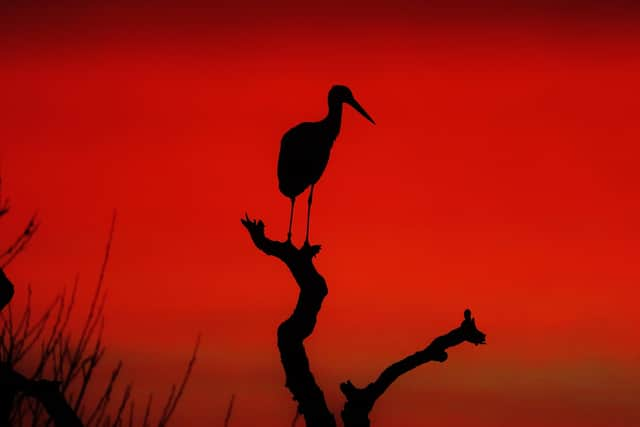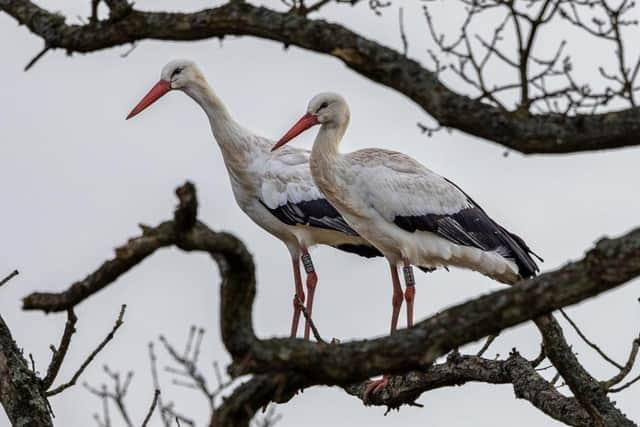Actress Joanna Lumley hails first white storks bred in Sussex countryside for hundreds of years
and live on Freeview channel 276
And among their fans is the actress Joanna Lumley who fell in love with the storks when she visited their breeding ground on the Knepp Estate at West Grinstead.
The Ab Fab star was featured on TV this week marvelling at the birds when she was shown them by Knepp’s pioneering owners Sir Charles Burrell and his wife Isabella Tree during the ITV programme ‘Joanna Lumley’s Home Sweet Home - Travels In My Own Land.’
Advertisement
Hide AdAdvertisement
Hide AdKnepp’s White Stork Project itself is continuing to make progress in its aims to restore a population of the birds in the south east of England following huge successes seen last year with the first white stork chicks hatching in the wild for generations.


Four fledglings were released last year from two nests at Knepp, along with 19 captive bred juveniles from Cotswold Wildlife Park.
GPS tracking devices fitted to some of the birds showed six of them crossed the English Channel on September 5 2020 on their migration to wintering grounds in southern Europe.
By October 13, two of them had crossed the Strait of Gibraltar into Morocco.
Advertisement
Hide AdAdvertisement
Hide AdTheir final winter destinations included two in southern France, one in central Spain and one in southern Spain, plus two in Morocco.


These are not expected to return to the UK until they near breeding age at around three years old.
One of 2019’s GPS tagged juveniles ‘Marge’, who became Knepp’s first juvenile to migrate to Morocco back in September 2019, spent the summer months of 2020 in southern Spain before returning to Morocco where she is currently on a landfill site near Rabat with one of the 2020 juveniles.
While several of the juvenile birds crossed the channel in September, some remained in the UK around the Knepp Estate and Knepp’s satellite site in East Sussex.
Advertisement
Hide AdAdvertisement
Hide AdThere are three small populations of resident storks in the south east which remain in the UK year-round forming the project’s breeding pairs, including the successful parents of the 2020 chicks.
Experts say that these populations encourage wild white storks to visit and to pair with released individuals.
With spring just round the corner, nesting and pairing behaviour is being seen at Knepp already.
The pairs which bred last year are back on the nests making repairs and re-establishing pair bonds while some new pairs are appearing which could mean even more nests than last year.
Advertisement
Hide AdAdvertisement
Hide AdWhite Stork Project officer for Durrell Wildlife Conservation Trust Lucy Groves said: “The 2021 nesting season has begun in earnest with the pairs from last year making repairs to nests and noisily re-establishing their relationships, bill clattering being heard around the estate.
“Excitingly, in addition to the two successful nests from last year, the third pair who built a nest but didn’t lay eggs, are busy building again.
“We also have a possible new pairing too, two individuals are coming up to breeding age and have been busy prospecting trees for nest sites.
“It is looking like it could be another exciting year for the project.”.
See www.whitestorkproject.org , Twitter @ProjectStork and Instagram @WhiteStorkProject where Project Officer Lucy shares news, updates and videos.